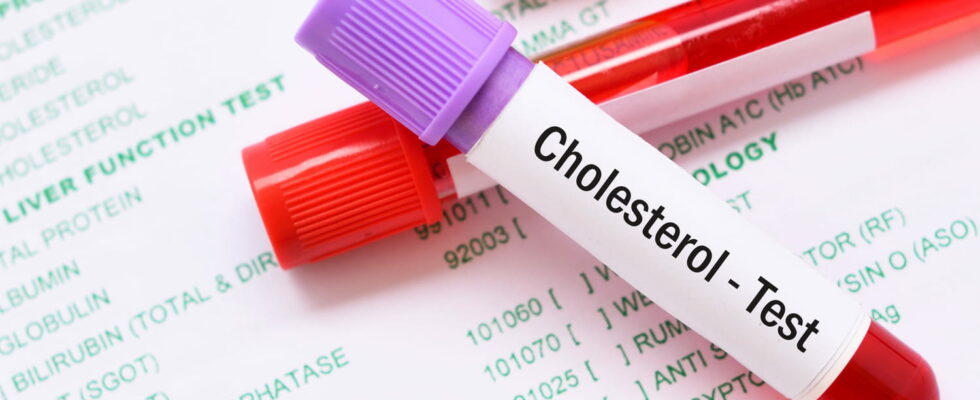“Without risk factors, we can tolerate a slightly higher rate,” reassures our cardiologist.
In excess, cholesterol (of course, the “bad” or “LDL cholesterol” that is found mainly in the blood) increases cardiovascular risk. Too high a level promotes the formation of atheromatous plaques mainly composed of fat on the walls of the arteries, obstructing the passage of blood and can ultimately lead to a heart attack or stroke. The standards for bad cholesterol levels vary for each of us, in particular depending on the patient’s profile and their associated risk factors (diabetes, hypertension, smoking, etc.).Over the years, cholesterol in the blood gradually increases, until about age 65. From age 65, cholesterol levels decrease a little bit. (a phenomenon probably linked to an alteration in the composition of some of its lipid fractions, editor’s note), Professor Gérard Helft, cardiologist and President of the French Federation of Cardiology (FFC), tells us. The problem is that there is no “age-by-age” target value that people can refer to.“. For information, between 55 and 64 years old, the average bad cholesterol level in France is 1.35 g/L.
The information collected is intended for CCM Benchmark Group to ensure that you receive your newsletter.
They will also be used, subject to the options subscribed to, by CCM Benchmark Group for advertising targeting and commercial prospecting purposes within the Le Figaro Group, as well as with our commercial partners.
The processing of your email for advertising and personalized content purposes is carried out when you register on this form. However, you can object to this at any time
More generally, you have the right to access and rectify your personal data, as well as the right to request its deletion within the limits provided by law. You can also review your options regarding commercial prospecting and targeting at any time. Learn more about our Privacy Policy or our Cookies policy.
► Without risk factors, we can tolerate a slightly higher LDL cholesterol level, says our expert without defining a maximum figure”since we will act on a case-by-case basis. For example, we will be a little more tolerant for an active woman who has no risk factors than for a diabetic and smoking man.“.
► With risk factors (diabetes, hypertension, overweight, smoking, etc.) or family history, the LDL cholesterol level must be less than 1 g/L or 1.3 g/L depending on the case.
► If you have already had a cardiovascular problem (stroke, heart attack, etc.), the “target” value for LDL cholesterol is much lower: “Have a rate lower than 0.55 g/L“, says our interlocutor.
From the age of 40, it is recommended to measure your cholesterol as part of a lipid profile carried out in a laboratory. It also allows you to check that there is no increase in triglycerides, often associated with an increase in the level of bad cholesterol. The blood test must be carried out on an empty stomach. This means not eating or drinking anything (except water) for 12 hours beforehand. Depending on the results, your doctor or cardiologist may advise you to change your lifestyle to naturally rebalance your cholesterol, prescribe additional tests or consider treatment.
